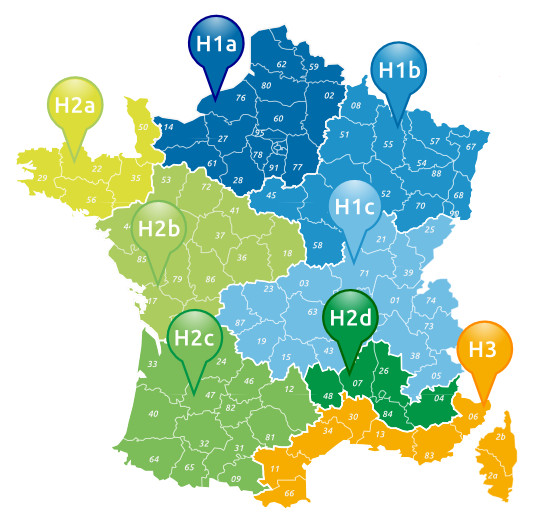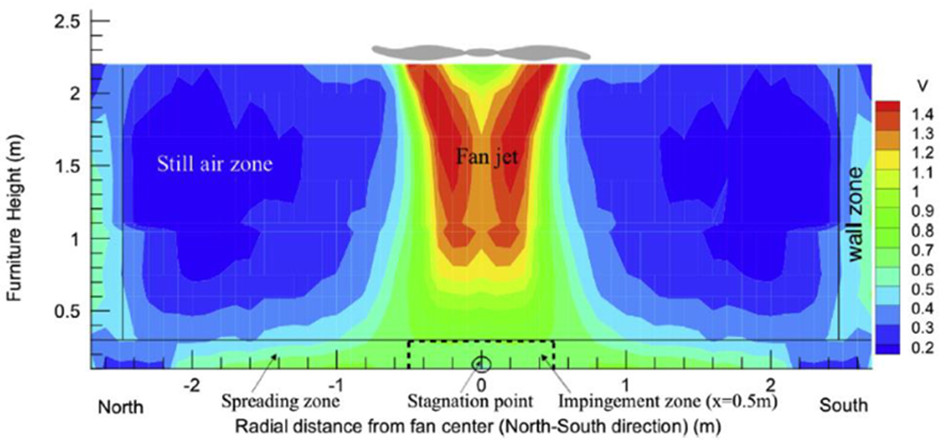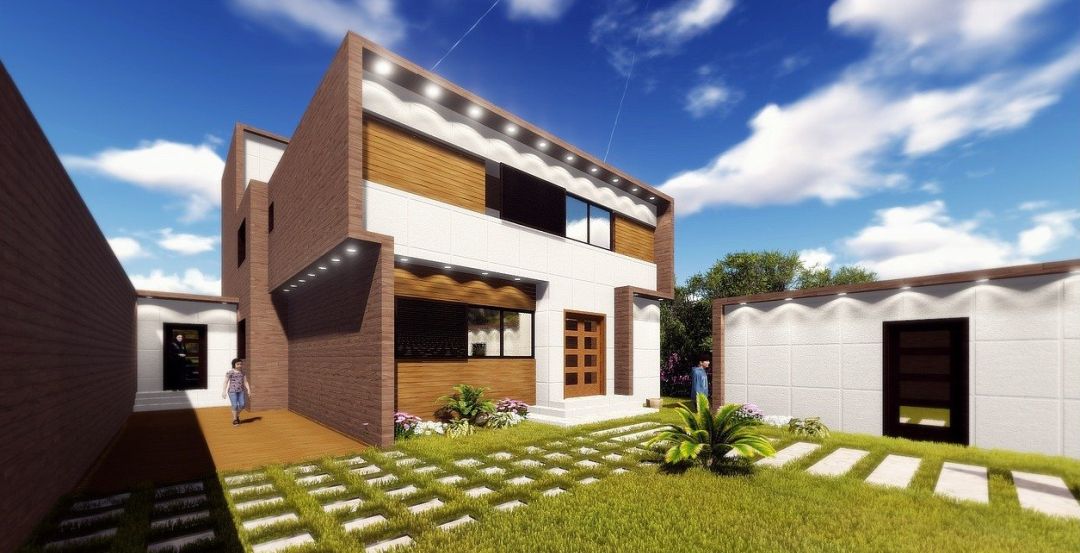Heatwave 2003: thousands of deaths and a long-term impact
August 2003. Jean-François Mattéi, the French Minister for Health, appears on the television news wearing a polo shirt, against a backdrop of trees.
A terrible heatwave is underway, claiming thousands of lives. The journalist asks, “Do you have any figures?
Answer: “I’m hearing estimates, 50 here, 300 there. Measures have been taken to account for deaths that could be linked to the heat. It’s hard to tell the difference”.
This sequence is considered to be one of the worst political mistakes ever made, showing the disconnect between out-of-touch politicians and a population in total disarray. Nearly 20,000 people died as a result of the 2003 heatwave.
However, not long before new building regulations began to address the issue of summer comfort, with the publication of RT 2000.[1].
A new indicator, the Conventional Indoor Temperature (Tic) was then created. No new building can now exceed a reference temperature value.
Despite its limitations, this indicator is maintained in the following thermal regulations: RT 2005 [2]and RT 2012[3].
With concerns about climate change growing, in the mid-2010s the government launched a new initiative to ensure that new buildings are better able to adapt to the warming predicted by the IPCC. A new set of regulations, the RE2020[4], incorporates a radically new indicator: degree hours. Applicable from 1 January 2022, the regulations require buildings to withstand not a single heat peak, but an overall number of hours of thermal discomfort..
Degree hours in RE2020: measuring discomfort
How are degree hours (DH) measured?
On the one hand, the simulated indoor temperature[5] is measured every hour as a function of the building’s characteristics, based on temperatures during the 2003 heatwave. The better the building is designed, the more resistant it will be to high temperatures (thicker walls, external insulation, high-performance glazing, etc.).
On the other hand, we take into account a conventional temperature (26 to 28°C[6] during the day, 26°C at night).
Finally, we differentiate between these two temperatures.
Thus, with a simulated temperature of 30°C between 12pm and 1pm, we count 3 degree hours [7](DH). In another case, if the simulated temperature is less than or equal to 27°C, it is considered that there is no overheating, so nothing is counted.
Simply add up the degree hours during the summer season, and you get the DH value [8]for the building in question.
There are three possible cases:
- Degree-hours > 1250: project not compliant with RE2020
- Degree-hours < 350: project compliant with the RE2020, the building is considered comfortable in all circumstances
- 350 ≤ Degree-hours ≤ 1250: risk of summer discomfort. The RE2020 calculation penalises the project on a flat-rate basis depending on the type of building, the climatic zone and the degree-hours of discomfort.
[5]Based on standard NF 15251 (adaptive comfort)
[6]After a succession of hot days, the human body tolerates the heat better. The RE2020 calculation method reflects this adaptation of the body by raising the calculation threshold of 26°C from +0 to +2°C depending on the temperatures experienced. The rise in this threshold is determined by the calculation algorithms that transcribe the NF 15 251 standard on adaptive comfort.
[7] 30-27=3
[8]Note: the example is simplified…
How do ceiling fans improve summer comfort?
The beneficial effects of fans have been known since ancient times.
By the same token, electric fans accelerate air movement, thereby reducing heat loss from the skin.
In a future article, we’ll look at the state of the art in thermal comfort. It should be noted that the RE2020 does not take account of ambient humidity or the clothing worn by occupants.
As a result, perceived thermal comfort is based on air speed alone.
In this area, professionals often refer to the diagram below, taken from the Woods Ventilation Guide[8].
[8] This table is provided for information only.

Figure 1 – Cooling felt as a function of air speed
So the higher the air speed, the higher the temperature the occupant will be able to withstand.
This leads to a calculation of degree-hours, which will naturally encourage solutions such as air mixers, climatic wells, etc.
RE2020: ceiling fans become essential.
Three renowned consultancies, Bastide Bondoux, Pouget Consultants and Tribu Energie, have worked together to publish a study in July 2021[10] showing the essential role of ventilation systems for summer comfort in RE 2020.
Here are a few extracts (p.41):
- In zone H3 (Mediterranean coast), air mixers will become the benchmark for limiting discomfort in summer.
- The action of the ceiling fans on degree-hours is always highly valued.
- Ceiling fans appear to be a very simple means of drastically reducing discomfort, even more so than the action of the climatic well in zone H3.
[10] The members of the consortium that financed the study are as follows: CIM béton, Isolons la terre contre le CO2, Ignes, EDF, Filmm, FF Tuiles et Briques, Uniclima.

In Zone H3/H2D (Mediterranean arc), ceiling fans are essential for summer comfort if the RE2020 requirements are to be met.
Focus on ceiling fans units in single-family homes: some simulation results
First of all, let’s remember that ceiling fans are part of the solution; they are not a substitute for good design. In fact, we would go so far as to say that they are the crowning glory of good architecture and good thermal engineering, rather than compensating for the shortcomings of a poorly thought-out building!
The elements below are the result of our first simulations in RE2020, and are intended more for designers than for buyers of individual houses; they are destined to be refined in the future.
- Daytime use gives better results in terms of degree hours than day and night use,
- Fans with a high airflow give better results in terms of degree hours[11],
- A greater number of fans means a lower number of degree hours (this goes without saying, but it’s better said). The hottest climatic zones require a higher level of equipment to meet degree-hour targets. For example, in zone H3 (Mediterranean arc) and H2D (Lower Alps in the broad sense + Lozère), it seems difficult to comply with the DH targets if there are no fans.
- Automatic management with a thermostat (triggering the air blower according to temperature) is very beneficial. To our knowledge, there are no appliances on the market equipped in this way, but they will probably appear in time.
In short, the RE2020 takes into account the efficiency of fans in calculations (through degree hours), making them an economical and effective solution for achieving regulatory summer comfort targets.
This article will be updated as information becomes available from our partners, so don’t forget to follow us on Linkedin to keep up to date!
[11] In fact, in RE2020, the air speed is proportional to the ratio (air flow in m3/h)/(room volume in m3). Beware, however, of actual comfort, which is specified in the next chapter.
Complying with the RE2020 regulations or achieving real comfort: what’s the priority for you?
Put like that, the question may seem incongruous.
In practice, environmental regulations are seen as a framework setting minimum standards in terms of energy and environmental quality.
That’s why, over and above compliance with the RE2020, which is necessary, a few basic rules need to be applied if you want real summer thermal comfort in a detached house fitted with ceiling fans units.
- Bedrooms: provide at least one fan for each room of less than 15 m². As a minimum, provide an outlet for ceiling fans in rooms that are not equipped.
- Living room: the number of ceiling fans will depend on the size of the room, its orientation, solar protection, glazing and roof insulation. For example, a west-facing room with large, medium-performance windows may be sensitive to overheating, and require more ceiling fans. A simple approach for the living room could be based on the regulations in the French overseas departments, which require one fan for every 20 m² of floor area.
Positioning : make sure that the fans are positioned above the occupied areas. In the case of fans with blades, for example, the zone of influence is limited to a cylinder vertically above the blades (see figure below). This means that a ceiling fan slightly offset from a sleeping area would be of little use. It should be noted that fans without blades are less sensitive to the question of positioning.

Figure 2 – Air speed distribution with a bladed fan (Source: Gao et al., 2017)
- Light points: take care to avoid stroboscopic effects, because a fan with blades, if placed below a spot of light, will cut off the light at regular intervals.
- Height under blades: as explained in a previous article, we strongly recommend compliance with standard NF EN CEI 60335-2-80, which recommends a minimum height of 2.30 m between the ground and the blades.
The RE2020 recognises the usefulness of air curtains for summer comfort, making them one of the essential pillars of summer comfort.
By taking into account good installation practices, homeowners will be able to make the most of them, and deal with climate change in the best possible way.
Acknowledgements
We would like to thank the following consultancies and organisations for their help in improving our understanding of the subject. Bastide-Bondoux, BBS-Slama, Facteur 4, Pouget Consultants, Tribu Energie, the CSTB end the Cerema Méditerranée.


